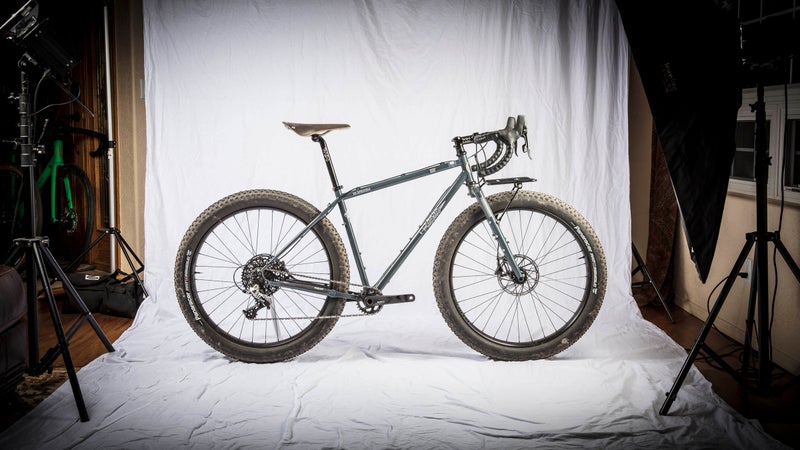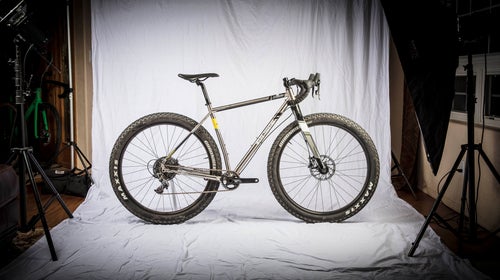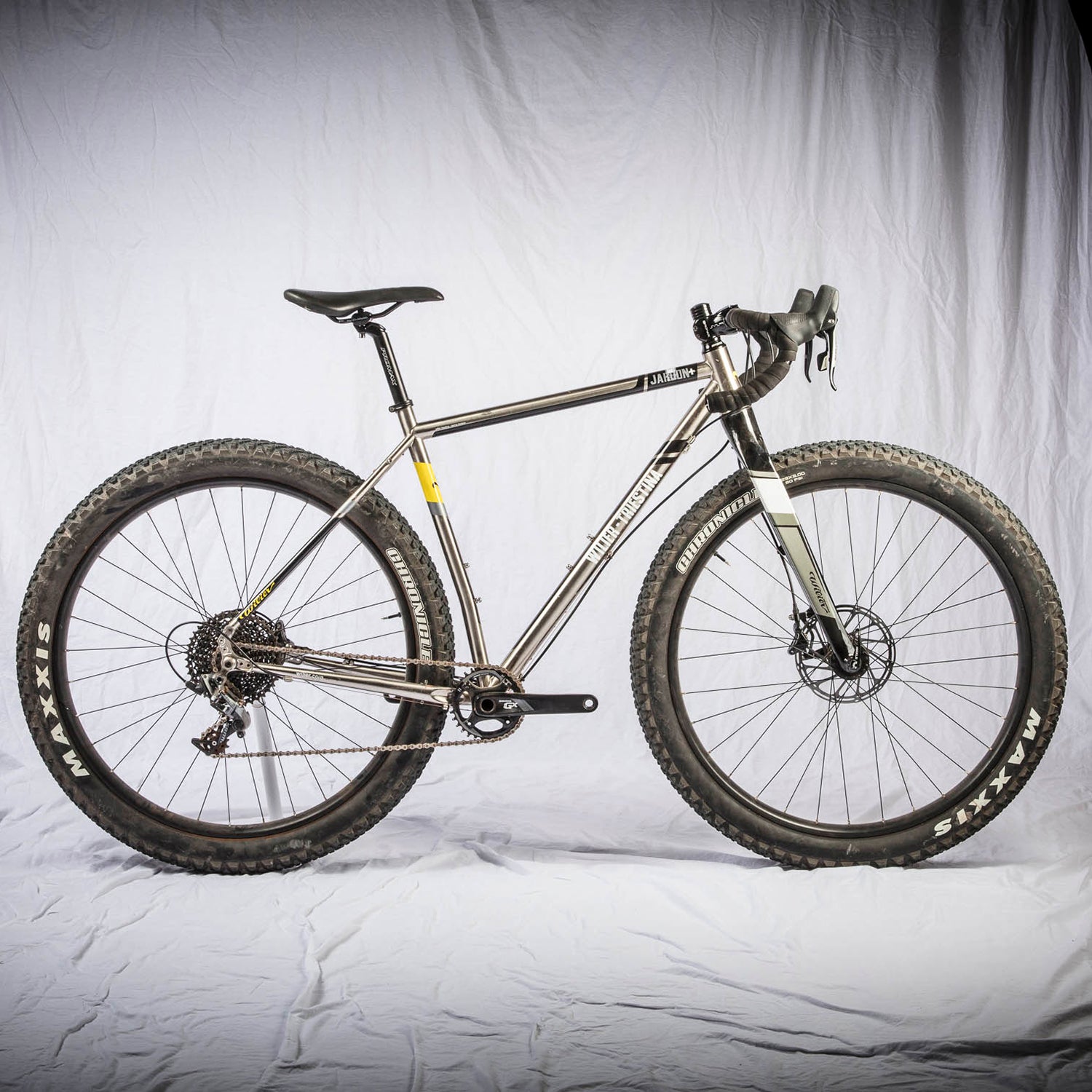Mixed-surface bikes, otherwise referred to as gravel or adventure bikes, are a hot trend. They’re effectively cross bikes with longer, lower geometries and extra tire clearance to take on all terrain, not just asphalt. The biggest trend in mountain bikes is plus-size tires, with 2.8- to three-inch rubber providing much of the grip and confidence of a fat bike, minus some heft.
Combining the two trends would make for the most remarkable and trendy bike around, right?
Not just one but two manufacturers seem to have thought just that this season: Wilier with the Jaroon Plus and Rawland with the Ulv. I called both in for our annual bike test in Sedona to see if the logic held up.
It’s worth remembering that Salsa beat both Wilier and Rawland to the plus-size, drop bar game last year with its eccentric and appealing 29+ Deadwood. The Jaroon Plus is the closest of our pair of testers to that model, though this bike leans more toward road geometry while the Deadwood was more MTB. In typical Italian fashion, the is drop-dead gorgeous, with a high-polish steel frame using what Wilier calls internal brazings, which puts the welds inside the frame for a neat, clean exterior finish. The fork is carbon, the brakes SRAM Rival hydraulic disc, and the drivetrain 1×11 SRAM Rival—clearance for the big tires leaves no option for a front derailleur, even if you want one.
I’ve been a fan of 29+ wheels ever since Surly launched the seminal Krampus four seasons ago. And I enjoyed them again here. The Wilier plows along on dirt roads like a runaway steamroller, and the huge tire patch made it just as surefooted when road turned to trail. Wilier chose a moderately flared handlebar, which adds to confidence and steering capability on jangling descents. Still, the oversize wheels and excess rubber have a tendency to bog down, especially on steep, punchy climbs and tight trail.

The , from boutique, Portland-based manufacturer Rawland, seemed as though it might be the antidote, since the 27.5+ tires would likely have less heft and inertia factor than the 29+. This triple-butted chromoly frame might look like a throwback, especially with that segmented steel fork, but in reality it’s a forward-thinking take on the randonneuring bike. Like the Jaroon Plus, it has a single-ring drivetrain (by necessity), hydraulic disc brakes, and braze-ons and mounts for damn near anything you can imagine, including three bottles, racks, fenders, and . And the new Brooks are perhaps the comfiest saddles I’ve ever ridden.
The raked-forward fork made the Ulv exceedingly stable at speed and confident negotiating rugged slopes. You can actually feel how light and energetic the high-end tubing is. It’s also springy and muted in a way only good steel can be. I enjoyed the bike with one major exception: the shape of the handlebars is such that it’s basically impossible to ride in the drops because of contact between your forearms and the tops. It’s an easy fix. If the Ulv were mine, I’d switch handlebars. Nonetheless, it limited testing because, without getting into the drops, you never felt like you could push hard.
In other words, plus-roadies seem like the most entertaining bikes I’d never buy.
And while I had a good time on both of these machines, I came away scratching my head a little bit. Sure, they’d be solid choices for dirt-road odysseys like the Tour Divide or the Oregon Outback, and you’d be a happy bikepacker if you favored fire roads and open country. On the other hand, you don’t necessarily need three inches of traction and float for that sort of riding, and the added rubber just means more weight to push around. Similarly, if I were bikepacking rugged trails and I favored plus-size, I’d definitely want something more MTB-oriented, such as the excellent Jones Plus. On both the Jaroon Plus and Ulv, I couldn’t escape the nagging feeling that, in most scenarios, I’d probably be happier on skinnier tires.
We also tested the , which is a very similar bike to the Ulv except it’s spec’d with 26-inch wheels and balloon-style Compass Rat Trap 2.3-inch slicks. (It fits 650Bs with up to 58mm tires.) The consensus among all testers was that the Ravn was the superior bike, at least for all-around use. While it was perhaps a little less deft on the trails than the Ulv, it held its own, and on pavement it felt spritely and quick like a road bike, not bogged down by plus-size rubber. We didn’t try it, but I can guess that the non-plus-size Wilier Jaroon, with 700c wheels and 42mm tires, would be similarly more popular.
So are plus-size, drop-bar bikes just a marketing gimmick?
Definitively not. I enjoyed riding both the Ulv and the Jaroon Plus, as did many testers. Given how much I like the way 29+ wheels smash along on dirt roads, I could even see adding one of them to my stable, but not before a super capable 29+ mountain bike like the Stache (which I’d also happily ride on dirt roads). That’s the thing: these are specialized machines for people with extremely niche interests or for those who own a whole slew of bikes and appreciate a range of quirky, interesting rides.
In other words, plus-roadies seem like the most entertaining bikes I’d never buy. (Though I’d seriously consider the smaller-tired Jaroon or Ravn.) Salsa seems to have already learned that lesson. Though the Deadwood was a hysterical ride, the company discontinued it after a single season. Still, we hope that plus-size, drop-bar bikes stick around, even though they are weird and particular. Both of these bikes were a laugh to ride, and it’s hard to argue with that.


